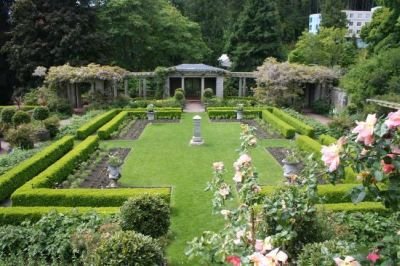Unknown Facts About Hilton Head Landscapes
Unknown Facts About Hilton Head Landscapes
Blog Article
Rumored Buzz on Hilton Head Landscapes
Table of ContentsThe Main Principles Of Hilton Head Landscapes What Does Hilton Head Landscapes Mean?Not known Details About Hilton Head Landscapes The Greatest Guide To Hilton Head LandscapesThe Ultimate Guide To Hilton Head LandscapesTop Guidelines Of Hilton Head Landscapes8 Simple Techniques For Hilton Head Landscapes
Line develops all forms and patterns and can be utilized in a range of methods the landscape. Line in the landscape is produced by the side between 2 products, the overview or shape of a kind, or a long direct feature. Lines are a powerful device for the developer because they can be made use of to produce an infinite variety of forms and types, and they control activity of the eye and the body.

Lines can have several qualities, such as those defined listed below, however they typically serve different functions. Figure 1. Lines in the landscape - Landscapers near me. The residential properties of lines identify exactly how people respond to the landscape, both psychologically and literally. Straight lines are architectural and strong; they develop an official character, are usually linked with a symmetrical layout, and lead the eye straight to a focal point.
A Biased View of Hilton Head Landscapes
Rounded lines produce a casual, all-natural, kicked back character that is linked much more with nature and asymmetrical balance. Curved lines move the eye at a slower rate and include secret to the room by producing covert sights.
Upright lines in the landscape include high, slim plant material, such as trees, or high structures, such as an arbor or a bird house on a pole. Horizontal lines move the eye along the ground aircraft and can make an area really feel larger. Reduced lines are a lot more suppressed and develop a feeling of remainder or repose.
Hilton Head Landscapes for Beginners
Lines are likewise created by the upright types of constructed functions and plant product. There are three primary line types that produce form in the landscape: bedlines, hardscape lines, and plant lines.
Bedlines link plant material to your house and hardscape since the eye follows the line, relocating the gaze with the landscape. Hardscape lines are developed by the side of the hardscape, which defines the constructed structure. Line can additionally be created by long and narrow materials, such as a fencing or wall.
The smart Trick of Hilton Head Landscapes That Nobody is Discussing
Kind is found in both hardscape and plants, and it is typically the leading visual element that spatially organizes the landscape and usually identifies the design of the yard. The type of frameworks, plant beds, and yard ornaments also identifies the general kind theme of the yard. Formal, geometric kinds include circles, squares, and polygons.
Plants develop kind in the yard through their outlines or silhouettes, yet kind can likewise be specified by a gap or negative space in between plants - Landscaping bluffton sc (https://giphy.com/channel/h1tnhdlndscps). Circles can be complete circles, or they can be split right into half circles or circle segments and incorporated with lines to develop arcs and tangents
The Hilton Head Landscapes Statements
Circles can likewise be extended into ovals and ellipses for even more range and rate of interest. Circles are a solid layout kind since the eye is constantly drawn to the facility, which can be made use of to highlight a centerpiece or attach other types. Figure 2. Circular kinds in hardscape and grass panels.
The square form can also be fractional and secondhand continuously to create a grid pattern. Unlike circles, squares are stronger on the edges, which can be lined up or overlapped to develop one-of-a-kind patterns and more complicated types. Polygons are many-sided kinds with straight sides. Triangulars, for instance, are three-sided polygons.
Meandering lines often mimic the all-natural training course of rivers or streams and can be explained as smooth lines with deeply bent undulations. Twisting lines (Figure 3) function well for paths, plant bedlines, and completely dry stream beds. Meandering lines can add interest and enigma to a garden by leading customers around edges to uncover new sights and spaces.
5 Easy Facts About Hilton Head Landscapes Explained

Number 5. Fragmented sides: stepping stones in path. Type is one of the most enduring high quality of a plant (Landscapers near me). https://www.storeboard.com/hiltonheadlandscapes. Common plant forms are their explanation well established and standard, as form is the most regular and recognizable quality of plants. Type can also be developed with the massing of plants, where the overall mass produces a various form than a private plant.
A very different type needs to be made use of with careone or more job well as a focal factor, however way too many wreak havoc. All-natural plant forms, instead of over-trimmed types, must establish the mass of the structure. The significance of general type is much more or less reliant on the viewing perspectivethe kind of a tree can appear quite different to a person standing under the cover versus watching the tree from a distance in an open area.
Some Known Facts About Hilton Head Landscapes.
Plant forms also create and specify the void or open spaces between the plants, creating either convex or scooped types in the gaps. High-arching tree branches commonly develop a concave open space under the branches, and a round canopy with low branches loads the room to create a convex form in the open space under the tree.

Report this page